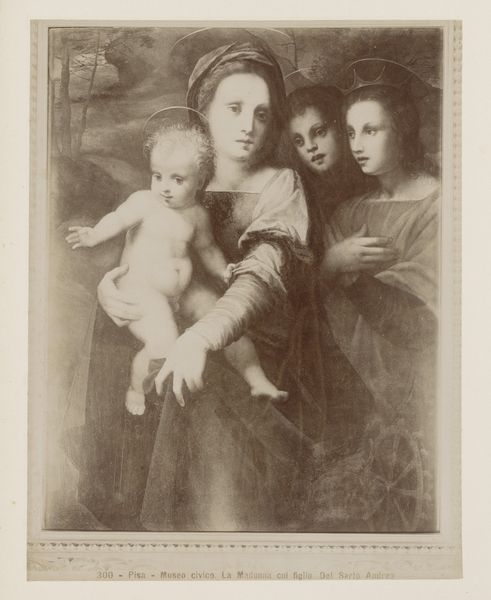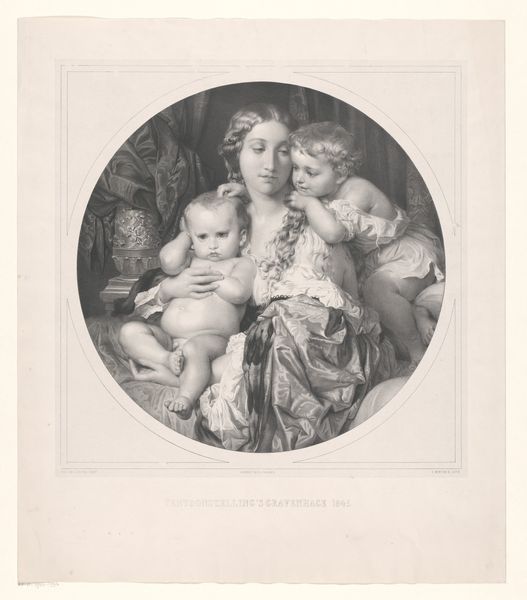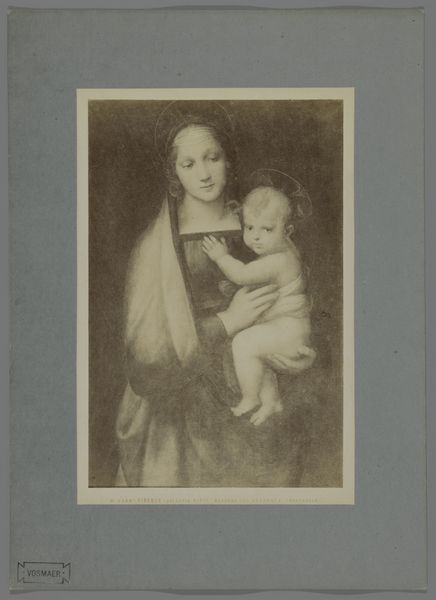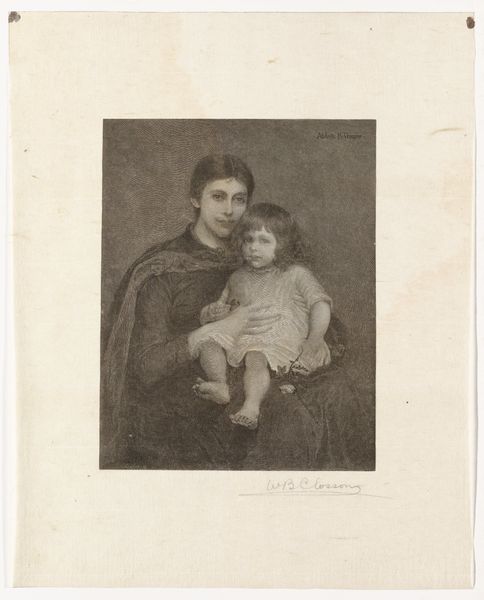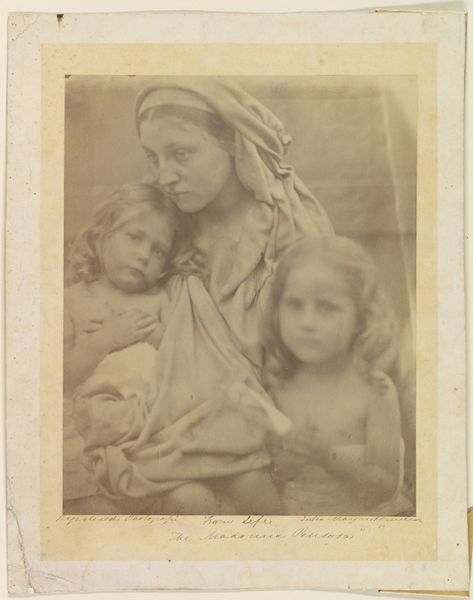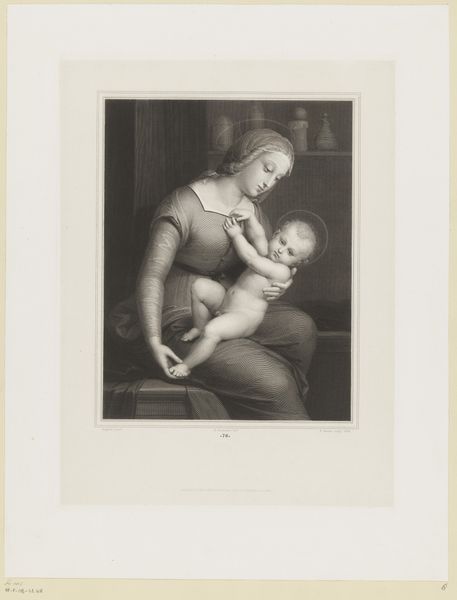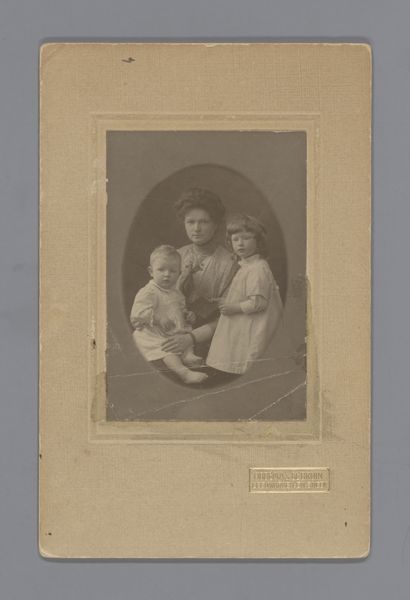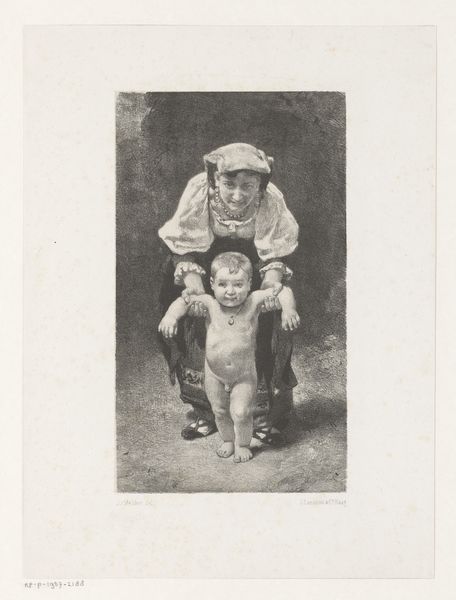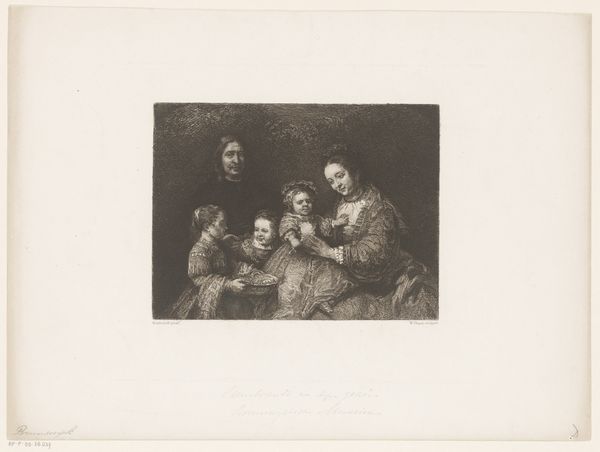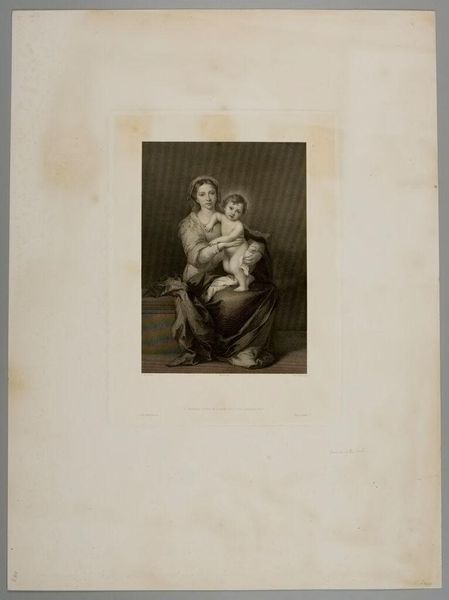
Fotoreproductie van schilderij Madonna met kind door Giulio Romano, Vaticaan 1890 - 1920
0:00
0:00
anonymous
Rijksmuseum
print, photography
#
portrait
# print
#
11_renaissance
#
photography
#
historical photography
#
history-painting
#
italian-renaissance
#
poster
Dimensions: height 242 mm, width 193 mm
Copyright: Rijks Museum: Open Domain
Editor: We're looking at a photo reproduction of Giulio Romano's "Madonna and Child," dating from around 1890 to 1920. It's currently housed in the Rijksmuseum. The soft focus gives it this dreamlike, almost haunting quality. How do you interpret the visual language used here? Curator: The photograph offers a fascinating exercise in the translation of media. Focus first on the composition, the deliberate arrangement of figures. Note the central positioning of the Madonna and child, counterposed by the additional figure, presumably Saint John the Baptist. Consider then the formal effect of the photographic print – how does the translation from paint change the overall aesthetic quality? Editor: It feels less vibrant, more muted than what I would expect from a Renaissance painting. Is that just the difference between a painting and photography? Curator: In part. The greyscale flattens the original dynamic interplay of color. This changes how we read the relationships between the figures. Without vibrant color, we focus on form and shadow, the way light defines the subjects and their spatial relationships. Consider, too, the way the sharp lines have softened, what effect does this diffusion have on your reading of the piece? Editor: I see now that the haziness creates a sense of depth, as if veiling the holy figures behind a cloud, or perhaps a memory. The contrast emphasizes the faces and brings forward the hands. Curator: Precisely. It brings a new dimension of temporality and re-presentation. In what way does this shift your perception? Editor: Thinking about it that way helps me appreciate how reproductions can bring their own unique perspectives. I was so caught up in the reproduction being “less than” the original. Curator: Indeed. By analyzing formal choices, we understand better the nuances of reproduction, and its artistic intervention.
Comments
No comments
Be the first to comment and join the conversation on the ultimate creative platform.
